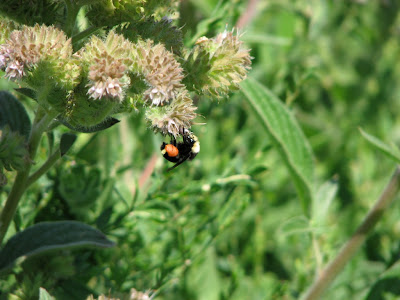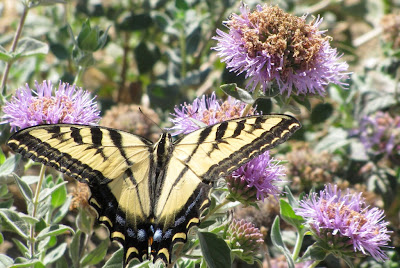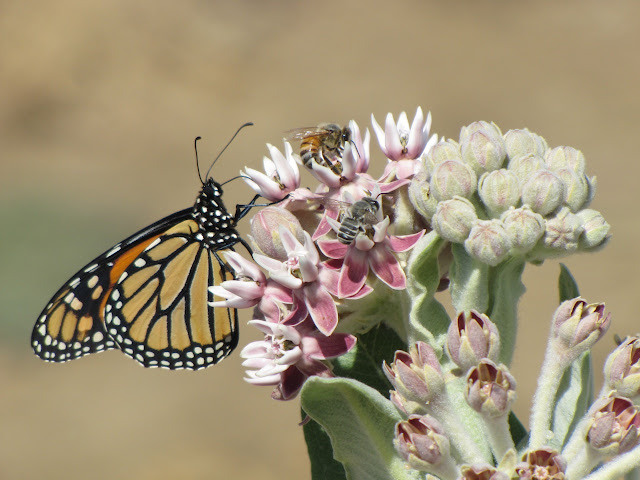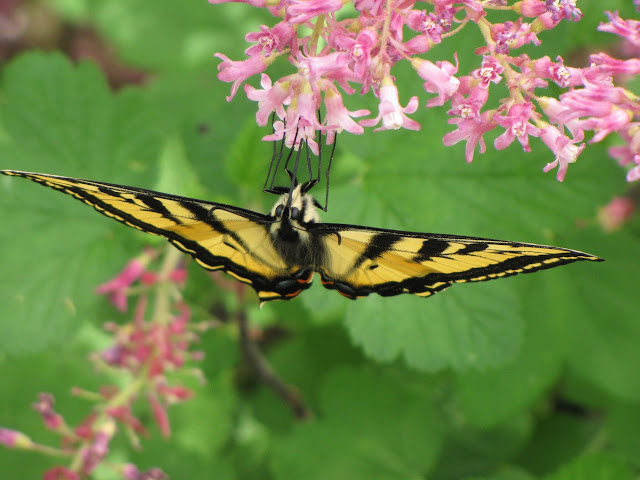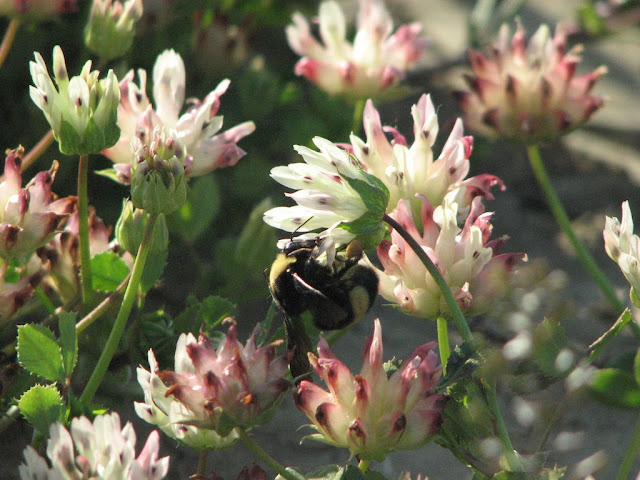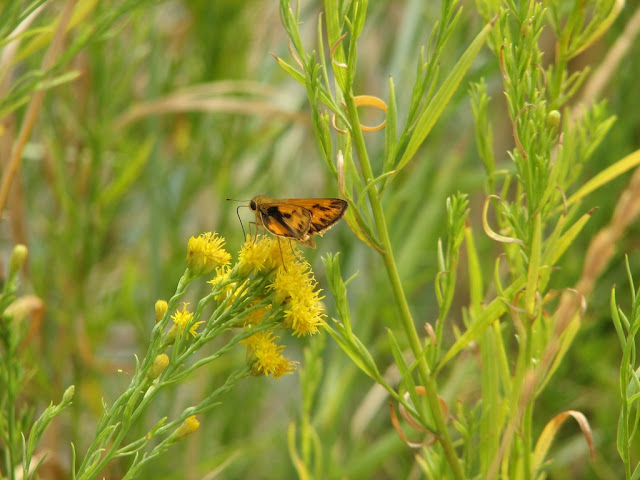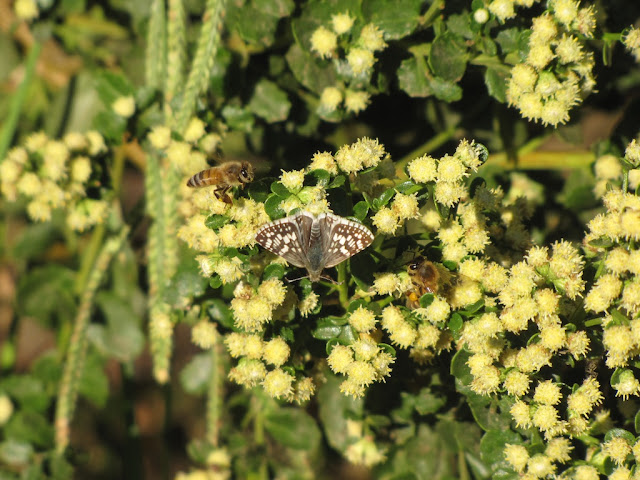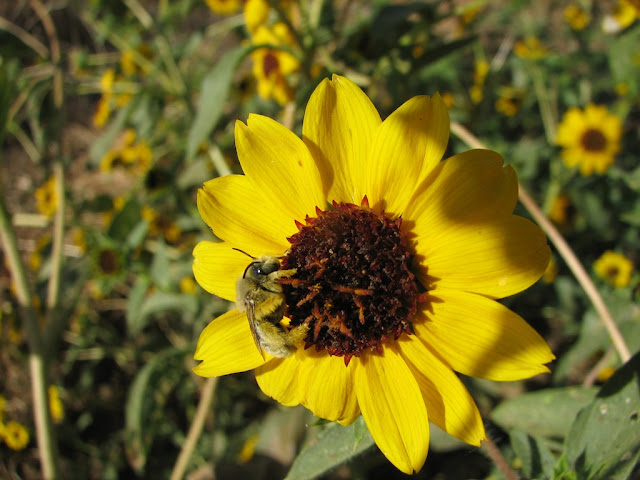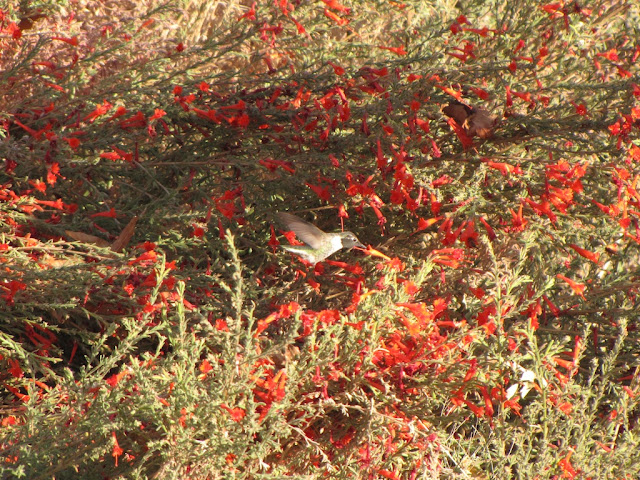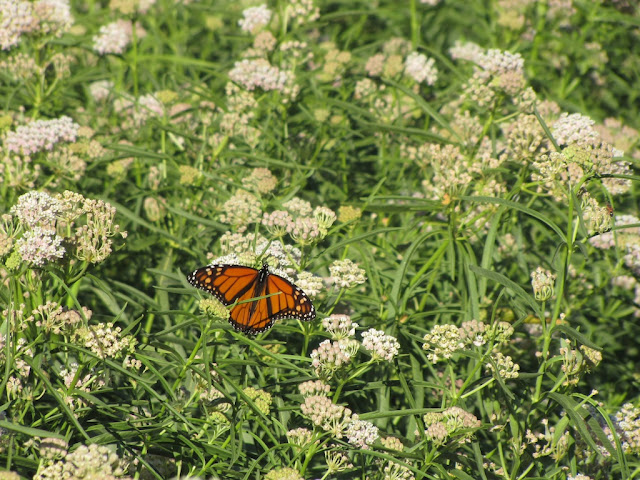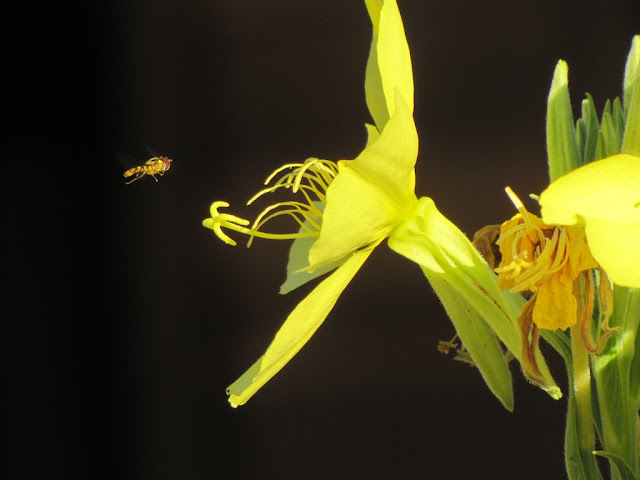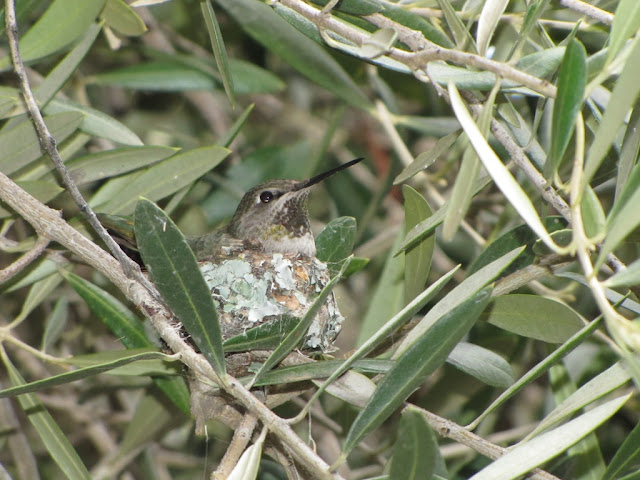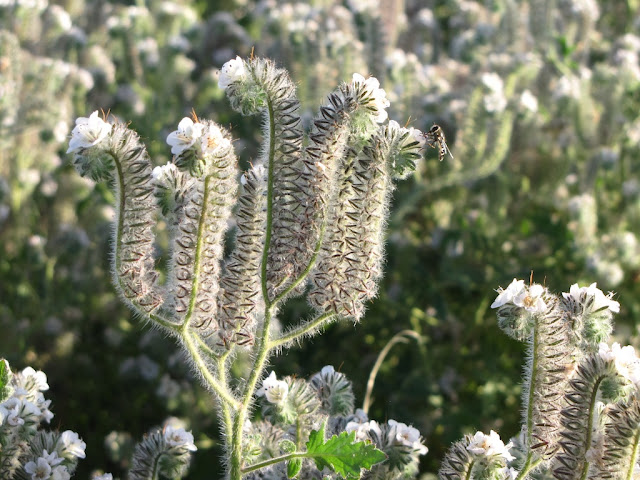Written by Emily Allen
At the end of March John and I joined in on a field trip to the Carrizo Plain National Monument, located in San Luis Obispo County. We were fortunate enough to have Larry Saslaw and Denis Kearns, botanists with the BLM, as our guides. They are a wealth of knowledge about the flora and fauna of the Carrizo. We started our trip at the Guy L. Goodwin Education Center. There is a lot of information about what you can find in the area and a great display area with a cross section of a Giant Kangaroo tunnel. Around the center is a labeled garden with some of the species of grass, flower, shrub and tree species found in the monument.
Our first stop was a site that was planted with Stipa (Nassella) cernua, nodding needlegrass and Poa secunda, one sided blue grass. Hedgerow Farms has been growing Poa secunda and Stipa cernua that was collected in the Carrizo so the seed can be used in areas that are disturbed or being restored throughout the Carrizo. This site was seeded in 2006 and there is an established stand of Stipa cernua that has started to fill with new seedlings. There is a lot of weed pressure from red brome, but the Stipa seem to be doing well. There were only a few Poa at this site.
 |
| An area successfully seeded with Stipa (Nassella) cernua in 2006. |
Our second stop of the day was to a cinder cone that we hiked to the top of. From the top you can see a large amount of giant kangaroo rat (k-rat) precincts. A k-rat will generally keep his burrow and the area around it (all together called a precinct) cleared and groomed. Each precinct houses one k-rat.
 |
| View of the giant kangaroo rat precincts from the top of the cinder cone. |
A k-rat will harvest seeds from his precinct and dry and store them in his burrow. The giant kangaroo rat is a state and federally listed endangered species and is a keystone species within the Carrizo NM.
 |
| A trail of seed at a burrow entrance. |
|
 |
| A Giant Kangaroo Rat burrow entrance. |
We also got to visit a site where
Poa secunda, one sided blue grass, is the dominate perennial grass (below).
 |
| A view of the valley and Poa secunda, one sided blue grass. |
Below is a site near a parking lot that was seeded in early 2011. The
Stipa cernua is doing really well.
 |
| Stipa (Nassella) cernua that was seeded in early 2011. |
Usually this time of year is a great time to see wildflowers, but since
it has been a dry spring so there weren't very many to see. One of the wildflowers that we did see throughout the valley is
Phacelia ciliata, valley phacelia (pictured below). There were patches of it along the road as we entered the norther part of the valley and there were pockets of purple throughout the valley.
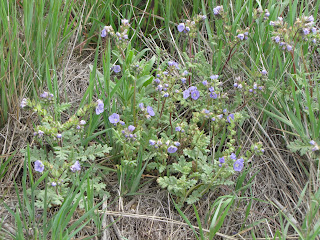 |
| Phacelia ciliata, valley phacelia. |
Stay tuned for part 2: the Vernal pools.







